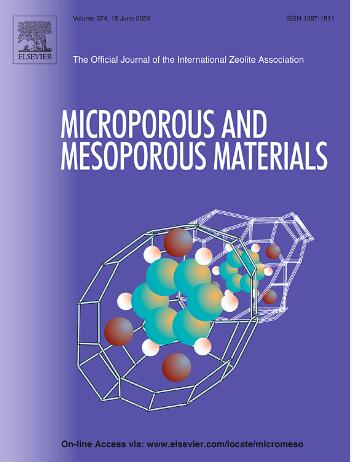Influence of the amount of sulfur supported on sustainable ordered mesoporous carbons from tannin for high-performance electrodes in lithium‒sulfur batteries
IF 4.8
3区 材料科学
Q1 CHEMISTRY, APPLIED
引用次数: 0
Abstract
Technological options for batteries are currently in great demand, and among them, lithium-sulfur batteries (Li-S) are promising. The low electrical conductivity of sulfur, the large volume variation, and the formation of soluble lithium polysulfides are the main challenges facing Li-S. This work proposes addressing these challenges by using sustainable ordered mesoporous carbon as a support for the sulfur in the cathode. The study showed how different contents of incorporated sulfur impact the electrochemical properties. Mesoporous carbons were obtained from tannins with a distribution of micro- and mesopores, and after the introduction of sulfur, the micropores were occupied. The sulfur contents in the MCS0.7, MCS1, and MCS2 composites obtained from the TG curves were 29 wt%, 39 wt%, and 61 wt%, respectively. XPS results indicated that the presence of S8 atoms infiltrated into the mesopores, and in smaller quantities, S2-4 atoms infiltrated into the interior of the micropores due to spatial constraints. The specific capacity at 0.1C was 1033 mA h gS−1 for MCS0.7, 830 mA h gS−1 for MCS1, and 666 mA h gS−1 for MCS2. The capacity values are greater for composites with lower sulfur contents, which favors charge transfer. This behavior can be explained by considering that a greater fraction of the elemental sulfur is in direct contact with the surface of the carbon matrix in these cases, as observed by the characterization of the materials. Furthermore, the MCSs showed an excellent rate capability due to their mesoporous structure. MCS1 was chosen for the cyclic stability tests, and a coulombic efficiency close to 99 % was observed during the test. The performance of these materials is among the best for Li-S batteries based on biomass-derived carbon. The results highlight the great potential of sustainable mesoporous carbon materials from biomass as efficient and environmentally friendly components for high-performance lithium‒sulfur batteries.

求助全文
约1分钟内获得全文
求助全文
来源期刊

Microporous and Mesoporous Materials
化学-材料科学:综合
CiteScore
10.70
自引率
5.80%
发文量
649
审稿时长
26 days
期刊介绍:
Microporous and Mesoporous Materials covers novel and significant aspects of porous solids classified as either microporous (pore size up to 2 nm) or mesoporous (pore size 2 to 50 nm). The porosity should have a specific impact on the material properties or application. Typical examples are zeolites and zeolite-like materials, pillared materials, clathrasils and clathrates, carbon molecular sieves, ordered mesoporous materials, organic/inorganic porous hybrid materials, or porous metal oxides. Both natural and synthetic porous materials are within the scope of the journal.
Topics which are particularly of interest include:
All aspects of natural microporous and mesoporous solids
The synthesis of crystalline or amorphous porous materials
The physico-chemical characterization of microporous and mesoporous solids, especially spectroscopic and microscopic
The modification of microporous and mesoporous solids, for example by ion exchange or solid-state reactions
All topics related to diffusion of mobile species in the pores of microporous and mesoporous materials
Adsorption (and other separation techniques) using microporous or mesoporous adsorbents
Catalysis by microporous and mesoporous materials
Host/guest interactions
Theoretical chemistry and modelling of host/guest interactions
All topics related to the application of microporous and mesoporous materials in industrial catalysis, separation technology, environmental protection, electrochemistry, membranes, sensors, optical devices, etc.
 求助内容:
求助内容: 应助结果提醒方式:
应助结果提醒方式:


